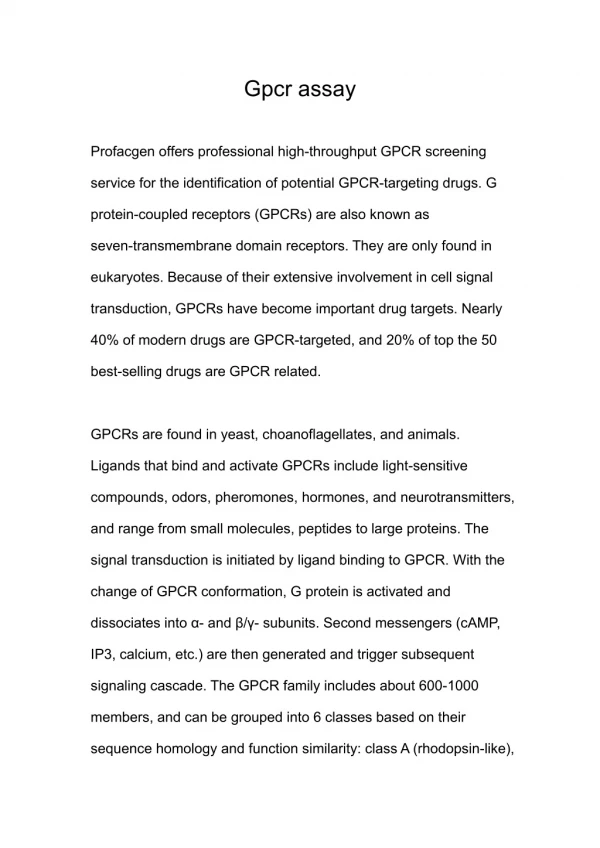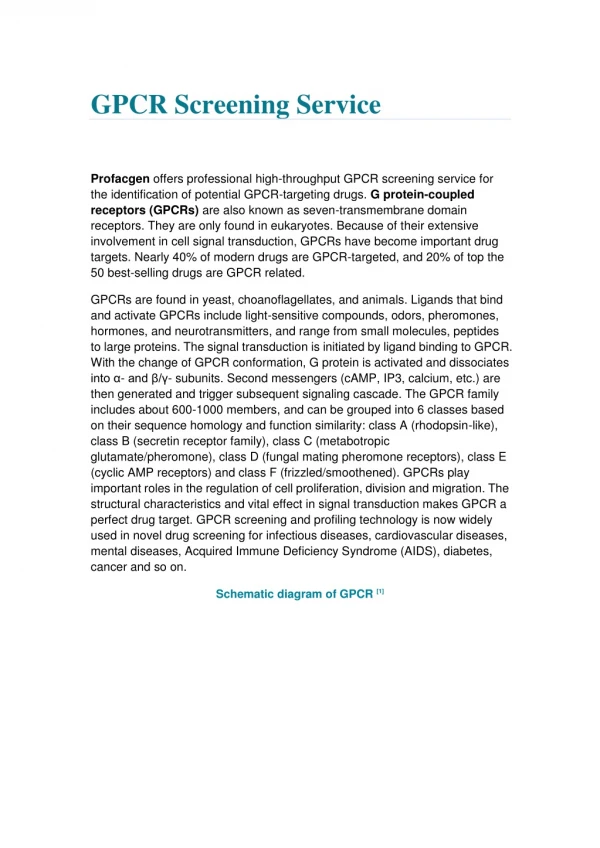gpcr assay
GPCRs are found in yeast, choanoflagellates, and animals. Ligands that bind and activate GPCRs include light-sensitive compounds, odors, pheromones, hormones, and neurotransmitters, and range from small molecules, peptides to large proteins. The signal transduction is initiated by ligand binding to GPCR. With the change of GPCR conformation, G protein is activated and dissociates into u03b1- and u03b2/u03b3- subunits. Second messengers (cAMP, IP3, calcium, etc.) are then generated and trigger subsequent signaling cascade. The GPCR family includes about 600-1000 members, and can be grouped into 6 classes based on their sequence homology and function similarity: class A (rhodopsin-like), class B (secretin receptor family), class C (metabotropic glutamate/pheromone), class D (fungal mating pheromone receptors), class E (cyclic AMP receptors) and class F (frizzled/smoothened). GPCRs play important roles in the regulation of cell proliferation, division and migration. The structural characteristics and vital effect in signal transduction makes GPCR a perfect drug target. GPCR screening and profiling technology is now widely used in novel drug screening for infectious diseases, cardiovascular diseases, mental diseases, Acquired Immune Deficiency Syndrome (AIDS), diabetes, cancer and so on.
★
★
★
★
★
81 views • 4 slides

